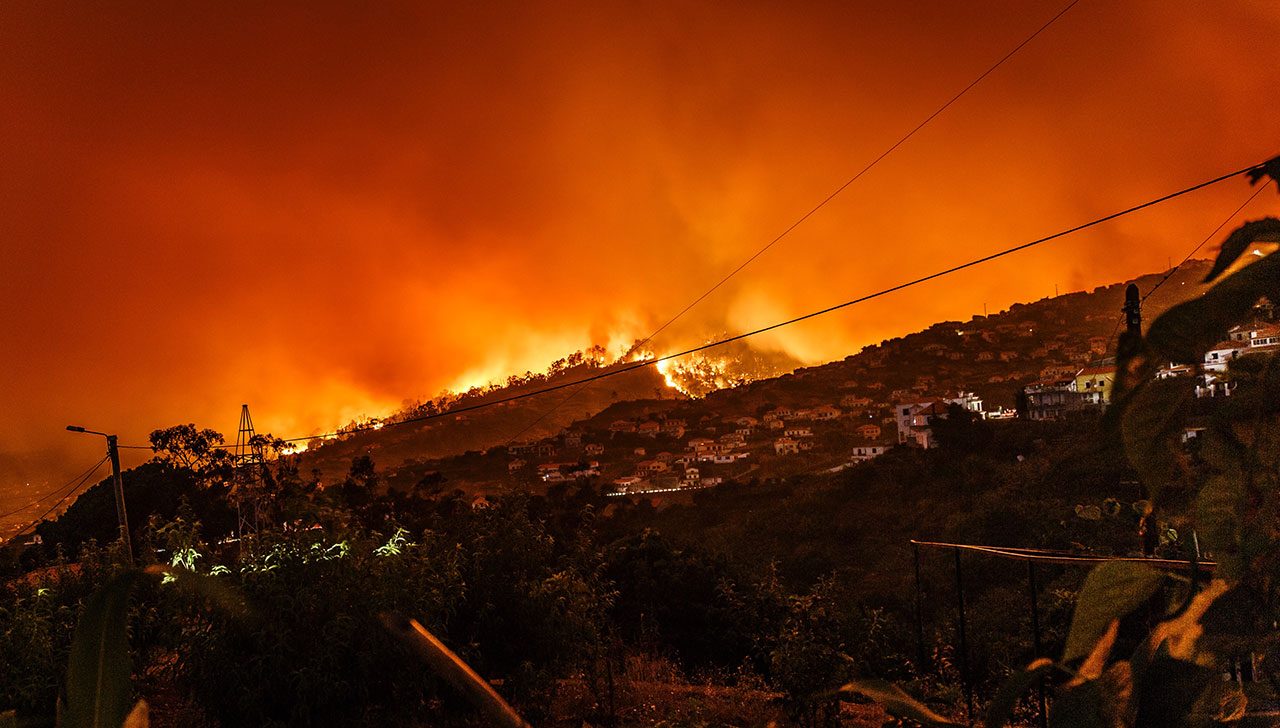This article is from the Australian Property Journal archive
OPINION: THE upheaval over the past few years, including Covid-19 pandemic and its lockdowns, has seen a raft of major climate related events affects large parts of Australia. From heatwaves and extensive fires in late 2019 into 2020; to major storms, extreme weather events and the floods across Eastern Australia in 2021 and 2022. The extremes have left homeowners, insurers, and banks reeling from the cost implications.
In 2021 NSW alone, 26 lives were lost, 2,448 homes destroyed and 5.5million hectares of land burnt, resulting in approximately $1.88 billion of insured losses. That summer in total across Australia (NSW, Queensland, Victoria, and South Australia) saw 38,181 claims with a total estimated insured loss of $2.32 billion (Australian Government, 2021). The Insurance Council of Australia (2022) estimate the impact of storms and floods that affected much of the Eastern states of Australia in 2022 to be in the order of $3.35 billion in insured losses, making it one of the costliest floods in Australia’s history.
As a result these events have seen banks, industry, and other stakeholders increasing their awareness levels of climate related risks, and reviewing their risk exposure. It also raises the issue of the future implications of these climatic influenced events, in particular the cost and value implications, and these cannot be underestimated as climate change will likely see these exacerbated. As noted in recent IPCC (2022) reports climate change will increase the likelihood of the escalation in intensity, frequency, and severity of such events into the future. In 2021-22 disasters affected areas previously untouched by flood or fire. It is clear therefore that a better understanding of property vulnerability to climate change and its resilience is required in the ownership, occupation, management, and valuation of property.
This research, funded by the Australian Property Research and Education Fund, explored the perspectives of valuers from around Australia. The research established that market stakeholders were seeing increasing industry requirements for climate risk reporting for assets and organisations (Cradduck, Warren-Myers and Schmidt, 2023). That reporting focused on emissions related risks (including transition risks) and, through programs like GRESB and TCFD, the inclusion of broader physical climate related risks. Internationally, there are increasingly more mandatory reporting requirements; and, within Australia, there are emerging climate related disclosures required for those listed on ASX.
Valuers therefore need to be aware of decision-making by the various property stakeholders, how in particular they are considering the various risks, and how this informs and shapes stakeholder decision-making, which is then reflected in values. The research found that valuers are adept at traditional risk identification processes, to do with the environmental (contamination, floods, bushfires etc.) and physical aspects of the property (building materials, age, combustible cladding etc), as well as other risks more normally considered including economic and market risk, location, ownership and tenant profile. Valuers relied on government (federal, state and local) information sources and mapping to identify extant environmental risks for individual properties, information from clients and other relevant sources. However, as noted by many most of these sources at present do not consider future consequences of climate change exacerbation or implications.
While climate change risks per se, were not commonly identified and reported on by valuers (concurring with an earlier online study by Warren-Myers and Cradduck, 2021), extant risks like flood and bushfire were often obtained through planning maps which were incorporated into valuations reports and consideration. However, as noted by valuers, these information sources often are created from historical events rather than future projections of how climate change may escalate these risks.
In regards to how climate related risks should be valued, there was clear preference to the need to maintain extant valuation standards, where the comparative approach still holds true in the consideration of like-for-like properties even in the context of climate change risk exposure. As a result, due to the general market not accessing climate risk information, nor being generally aware of climate change risks, it was surmised by valuers that the market is unlikely to be pricing these risks. There was a consensus that there is at present an absence of price implications related to climate change risks, as these are not being reflected in the market evidence, yet.
Some of the valuers noted climate change risks in their commentary, but rarely did they see it having an impact on the value consideration (unless the market evidence indicated), and in these cases disclaimers were used. Two of the biggest challenges valuers noted was the lack of clear and concise information that was reliable; and limitations of their own knowledge about climate change and the implications for property.
Finally, it emerged that challenges to the valuation principles and considerations for properties, particularly in the context of perpetuity for properties exposure to severe future climate change related risks (like sea level rise and total inundation of the property) presented a ‘wicked problem’ that requires further investigation.
Going forward valuers will need to upskill and develop their knowledge of risk identification in the context of climate change, and how this may affect extant risks and vulnerabilities of the property. In the future, valuation processes will not only focus on physical related risk exposure, but emissions reporting and transition risks and costs, which will likely have implications for property values and valuation practices.
Understanding the risk reporting obligations/desires of property stakeholders across the industry will be of paramount importance for valuers, to enable them to understand the dynamic and changing reporting environment that is evolving in the property industry. This will have far reaching implications for owners, occupiers, managers, valuers and other property professionals.
This article was contributed by Associate Professor Georgia Warren-Myers and Associate Professor Lucy Cradduck with funding from the Australian Property Research and Education Fund, for the project: Valuation @ Risk
Please contact the researchers Dr Georgia Warren-Myers g.warrenmyers@unimelb.edu.au or Associate Professor Lucy Cradduck l.cradduck@qut.edu.au for more information.
Reference List
Australian Government (2021) Black Summer Bushfires [Online] https://knowledge.aidr.org.au/resources/black-summer-bushfires-nsw-2019-20/ (accessed 8/11/2022)
Cradduck, L., Warren-Myers, G., and Schmidt, M. (2023) The obligation to report climate risks: What, Who, and How? In Proceedings from the Pacific Rim Real Estate Society (PRRES) Conference 2023, Australia, Sydney, 15-17 January 2023.
Insurance Council of Australia (2022) [Online] https://insurancecouncil.com.au/resource/updated-data-shows-2022-flood-was-australias-costliest/ (accessed 8/11/2022)
IPCC, 2022: Summary for Policymakers [H.-O. Pörtner, D.C. Roberts, E.S. Poloczanska, K. Mintenbeck, M. Tignor, A. Alegría, M. Craig, S. Langsdorf, S. Löschke, V. Möller, A. Okem (eds.)]. In: Climate Change 2022: Impacts, Adaptation
and Vulnerability. Contribution of Working Group II to the Sixth Assessment Report of the Intergovernmental Panel on Climate Change [H.-O. Pörtner, D.C. Roberts, M. Tignor, E.S. Poloczanska, K. Mintenbeck, A. Alegría, M. Craig,
S. Langsdorf, S. Löschke, V. Möller, A. Okem, B. Rama (eds.)]. Cambridge University Press, Cambridge, UK and New York,
NY, USA, pp. 3–33, doi:10.1017/9781009325844.001.
Warren-Myers, G., & Cradduck, L. (2021). Physical and climate change-related risk identification in valuation practice: an Australian perspective. Journal of Property Investment & Finance. Vol. 40 No. 1, pp. 14-37. https://doi.org/10.1108/JPIF-10-2020-0114





